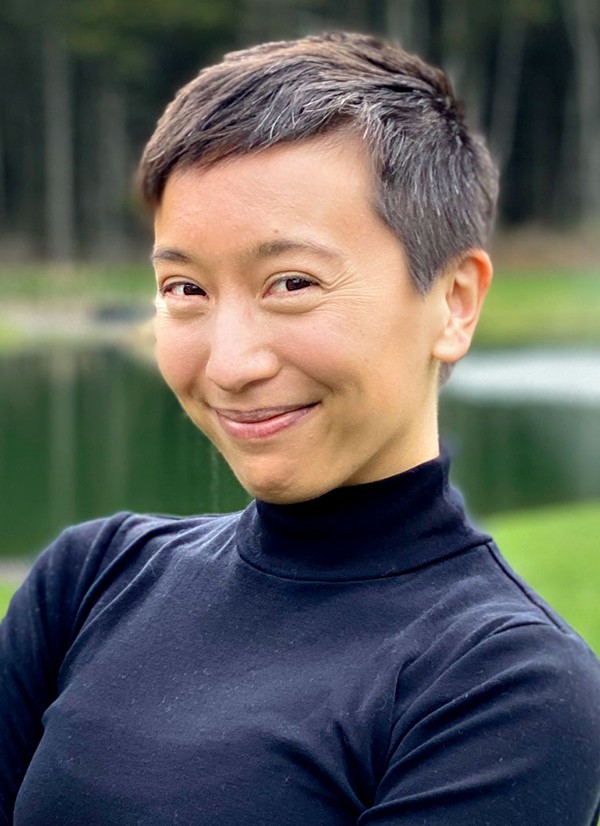Elizabeth Kellogg, assistant professor of molecular biology and genetics in the College of Arts and Sciences, has been named to the Pew Scholars Program to pursue research into advancing gene editing capability.
Kellogg’s project seeks to harness the power of transposases – enzymes that catalyze the movement of specific DNA elements – to engineer novel genome-editing tools. One of 22 early-career researchers selected for the Pew Scholars Program in the Biomedical Sciences, Kellogg will receive funding for the next four years to investigate what the Pew Foundation calls a “timely question” related to human health and disease.
In recent years, scientists have started a revolution in gene editing technology using CRISPR-Cas, a series of genes found naturally in bacteria that encode protein that make precise cuts in the genome, Kellogg said. The discovery won the 2020 Nobel Prize in chemistry.
There’s a limit, however, to what CRIPSR can do, she said; the molecule makes precise cuts, but is not good at pasting in new genetic material.
“With CRISPR-Cas9, introducing a new gene sequence is not that easy,” Kellogg said. “It makes the cut, but introducing a new sequence can be tricky.”
Kellogg plans to build upon CRISPR technology using her existing expertise in transposons. An entirely different class of macromolecule than CRISPR and found in all cells, transposons naturally cut and paste DNA – that’s their function in a cell.
“They would be great at delivering new DNA sequences,” Kellogg said. “Being able to insert any piece of DNA you want, anywhere in the genome is potentially massive. CRISPR can be metaphorically thought of as scissors, but we don’t have a glue stick yet. We don’t have any way to paste things together. But with [transposons,] we would have our scissors, we’d have our glue stick and we would be able to start making new things.”
Transposon mechanics are complicated, however. Up until recently, Kellogg said, “it was generally believed that you couldn’t control where transposons insert themselves; they could insert anywhere.”
Kellogg will collaborate on this project with Joseph Peters, professor in the Department of Microbiology in the College of Agriculture and Life Sciences, and Ailong Ke, professor in the Department of Molecular Biology and Genetics in A&S. The three-lab collaboration is well-positioned to study transposons toward the next step in gene editing, Kellogg said. Kellogg uses cryo-electron microscopy (cryo-EM) and computational protein modeling to study fundamental mechanisms of DNA recombination. Ke is a CRISPR expert who trained with Jennifer Doudna, co-winner of the 2020 Nobel Prize in Chemistry for work on CRISPR. And Peters focuses on DNA replication, recombination and repair.
Peters, who studies transposons as part of his DNA research, recently discovered a class of gene that is a hybrid of a CRISPR system and a transposon. It was subsequently shown by other researchers that these systems could be reprogrammed in bacteria to integrate a DNA sequence at a desired location in the genome.
“That showed that you could control where it was inserting,” Kellogg said. “That was a huge revelation, that these CRISPR-associated transposons can be repurposed for targeted DNA delivery. We can actually use this not just to cut things, but also to paste in the desired DNA sequence. It’s going to be revolutionary when we can do this reliably and robustly.”
To that end, members of the Kellogg lab are combining their expertise in cryo-EM, protein modeling and computational protein design to generate new genome-editing tools.
“The aims are synergistic: New mechanical insights will guide design strategies and vice versa,” Kellogg wrote in her PEW project proposal. “Capabilities along these lines would enable precise introduction of new promoter sequences or in-frame coding protein-coding blocks, which are currently either impossible or cumbersome with available gene-editing tools. One can easily imagine that such capabilities will bring about a second revolution in biomedical science, eclipsing CRISPR.”
Kate Blackwood is a writer for the College of Arts and Sciences.









